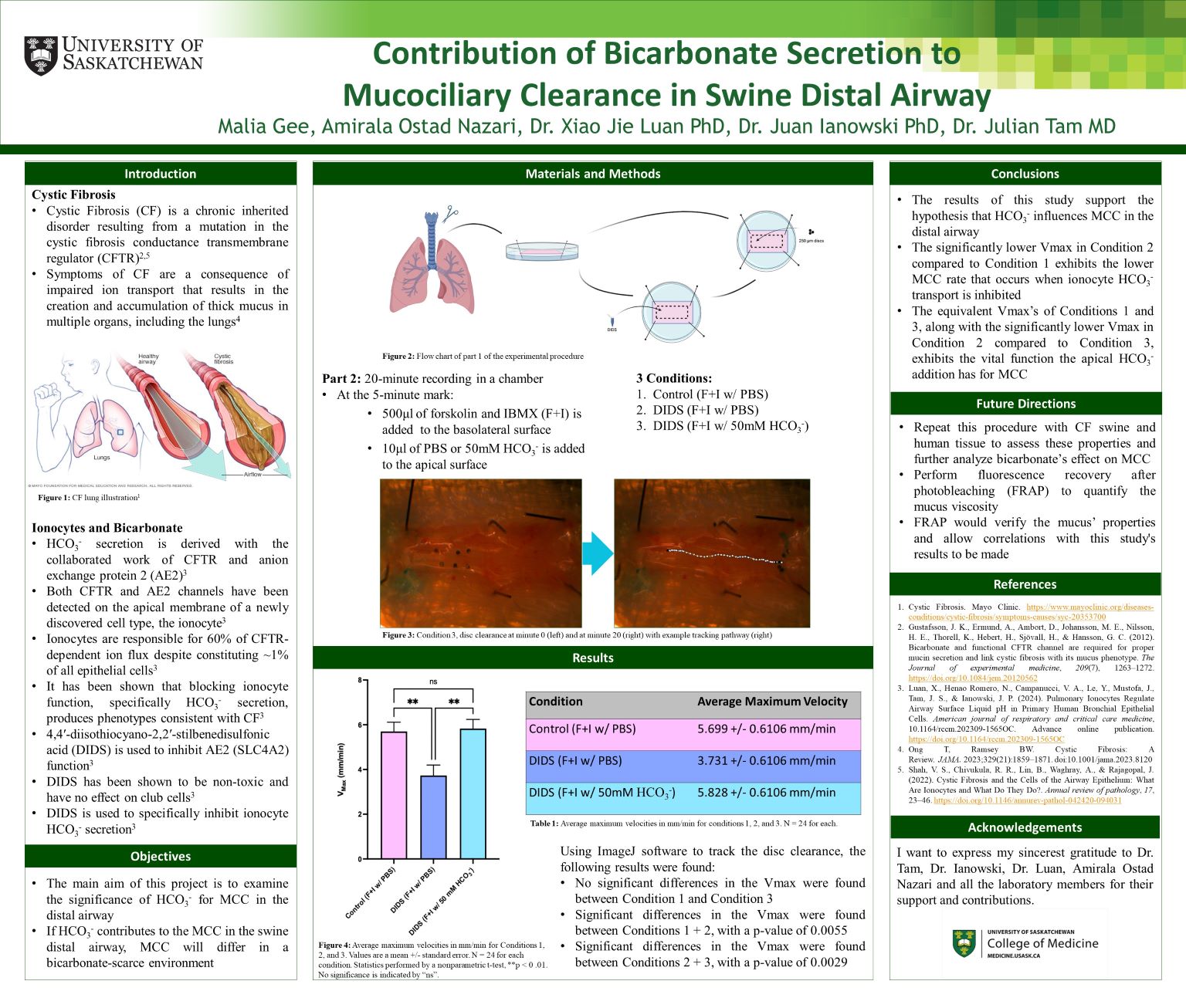
Contribution of Bicarbonate Secretion to Mucociliary Clearance in Swine Distal Airway
Malia Gee
Cystic Fibrosis (CF) is a chronic disorder resulting from a mutation in the cystic fibrosis conductance transmembrane regulator (CFTR). CFTR is an anion exchanger responsible for chloride, and bicarbonate secretion in the airways. The anion exchange protein 2 (AE2) and CFTR are found on the apical membrane of ionocytes where they collaborate to contribute to bicarbonate secretion. Ionocytes are responsible for 60% of CFTR-dependent ion flux despite constituting ~1% of epithelial cells. Inhibiting ionocyte function has been presented as sufficient to produce phenotypes consistent with CF. There have been debates about the significance of bicarbonate secretion to mucociliary clearance (MCC). If bicarbonate influences MCC in the distal airway, MCC will differ in a bicarbonate-scarce environment. To test this hypothesis, we tracked the movement of 250μm tantalum discs on distal airway samples in one control and two experimental conditions. Both experimental conditions inhibit ionocyte bicarbonate secretion however, they differ as only one condition includes a bicarbonate addition to the apical membrane at the five-minute mark. Our results show a significant MCC reduction in bicarbonate-scarce environments that is restored when bicarbonate is subsequently added. We hope to assess these properties in CF swine and human tissue, further analyzing bicarbonate’s effect on MCC.
